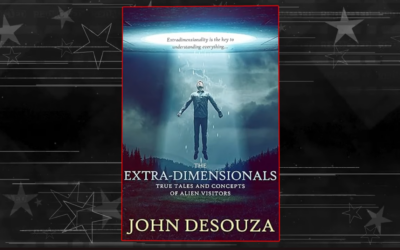How the pros make deepfakes I Deepfakes explained
“Fake news”
Used to be a relatively uncommon problem, but over the last decade, and especially during the COVID-19 pandemic, increasing consumption of news and articles has caused misinformation to run wild.
Far from a new concept, misinformation and cherry-picked stories have been used throughout history as a form of propaganda or information warfare. However, the rise of social media as a hub for sharing articles has spread “fake news”—false or misleading information presented as legitimate news—all over the internet.
Fueled further by increasing polarization, as well as the use of the term by former U.S. President Donald Trump to also refer to negative coverage (whether legitimate or misinformed), it seems more difficult than ever to separate trustworthy from misleading sources.
With this in mind, we combined guidance from non-profit journalism project First Draft News and the International Federation of Library Associations and Institutions (IFLA) to create this guide for understanding “fake news” and how to spot it.
The Different Types of “Fake News”
In order to spot fake news, you have to know the many forms misinformation can take.
Not all fake news is created equal, or even with the intent to deceive. Some start as opinions or jokes that become misunderstood, twisted over time, and eventually turn into misinformation. Others begin with the sole purpose of deception.
Online Misinformation From Least Intentional to Most
Satire/Parody
Articles or videos created to mock or laugh at an issue. If created without being an obvious parody, these types of articles can still fool readers and be shared as “real.”
False Connection
Stories with headlines, visuals, and captions that don’t support the content. Sometimes the cause is an honest mistake or poor journalism, but other times the false connections are deliberate to draw more attention.
Misleading Content
Misleading use of information to frame an issue or individual, especially one not involved in the story. This can be caused by poor journalism or political influence, but is also caused by opinions being shared as news and the increasingly blurring line between the two.
False Context
Genuine content that is shared with false contextual information, such as an incorrect date or a mis-attributed quote. This type of misinformation can still appear on news sites with poor fact-checking or opinion-based reporting, but is clearly driven by an agenda with an attempt to influence.
Imposter Content
When genuine sources are impersonated in order to deceive the audience. Though this type of misinformation is used in parody, it is also used for profit and propaganda purposes, such as by sites disguised to look like news organizations or using fake credentials.
Manipulated Content
The deliberate manipulation of information, such as digitally altering an image or making up quotes. This type of misinformation is easily proven fake with some research, but can spread too far before it is fact-checked.
Fabricated Content
Newly created false content designed to deceive and do harm. These include deep-fake videos and sites posing as legitimate news organizations.
Despite many types of misinformation appearing to be obvious at a glance, it’s harder to discern when browsing online. In a 2019 global survey on social media by Ipsos, 44% of people admitted to being duped by fake news at least once, while others may have been duped unwittingly.
And one reason is that fake or provocative news are simply being spread further, and more maliciously. A recent study of one Facebook bot farm found close to 14 thousand bots published around 200 thousand posts each month.
How To Tell If An Article is “Fake News”
With many types of misinformation to contend with, and trust in media organizations falling in the U.S. and around the world, it might seem like you’re surrounded by “fake news,” but there are a few things you can check to be sure.
The Source
Investigate the site to make sure it’s legitimate, and check its mission and its contact info to understand if it’s news, satire, or opinion.
The URL
Be wary of unusual top-level domain names, like “.com.co” that are designed to appear legitimate, such as ABCnews.com.co.
The Text
Does the article have spelling errors or dramatic punctuation? This can be an easy find for simple fabricated content, as most reputable sources have high proofreading and grammatical standards.
The Information
Read past click-bait headlines, note who is (or isn’t) quoted, and verify the information on other sites. This is also a good way to separate opinion pieces from news.
The Author
Check the author’s bio and do a quick search on them. Are they credible to write about their story? Are they real?
Supporting Sources
Click on the supporting links, and perform reverse searches on images. Do they actually support the story, or are they irrelevant (or worse, manipulated).
The Date
Sometimes older news stories are shared again and gain traction because of current events, but that doesn’t mean they’re relevant or accurate.
Your Bias
Especially with the rise of opinionated journalism and websites profiting from polarization, consider the intended audience for this story and if your own beliefs could affect your judgement.
The Experts
If a story feels flimsy, or doesn’t seem to be properly cited, consider asking an expert in the field or consulting a fact-checking site.
More than anything, consider that outrageous misinformation has an easier time spreading on the internet than boring real news. An MIT study found that false stories on Twitter were 70% more likely to get retweeted than accurate news.
But armed with knowledge about what “fake news” looks like, and with increased pressure on news organizations, the tide can be turned back in the favor of accurate news.
Source: https://www.visualcapitalist.com/how-to-spot-fake-news/







0 Comments